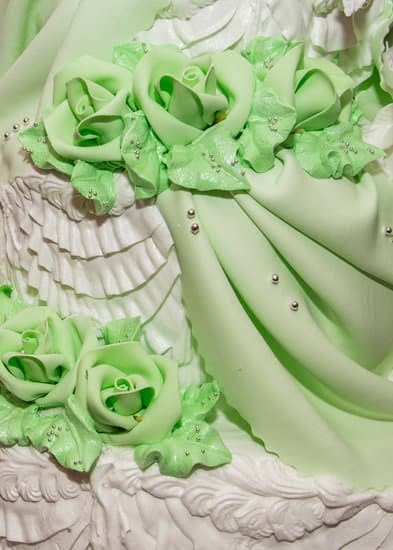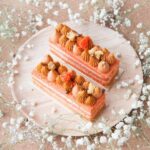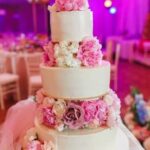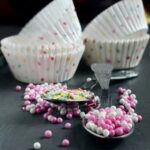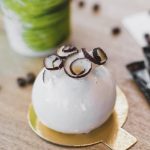Whether you are a novice baker or a seasoned cake decorator, having the perfect icing recipe for cake decorating is essential to creating stunning and delicious confections. The right type of icing can elevate a simple cake into a masterpiece, adding flavor, texture, and visual appeal. In this article, we will explore the importance of having the perfect icing recipe for cake decorating and delve into the different types of icing used in cake decoration.
When it comes to cake decorating, there are various types of icing that serve different purposes and create different effects. From smooth and creamy buttercream to elegant royal icing, each type offers its unique advantages in enhancing the overall look and taste of a cake. Understanding the differences between these types of icing and knowing when to use them is crucial for achieving professional-looking results.
In addition to exploring the types of icing used in cake decoration, we will also discuss the essential ingredients needed for making the perfect icing. From butter and powdered sugar to flavorings and food coloring, each ingredient plays a vital role in determining the taste and consistency of the icing. By understanding these key components, you can create personalized icing recipes tailored to your specific preferences and requirements.
Types of Icing for Cake Decorating
When it comes to cake decorating, the type of icing used plays a crucial role in achieving the desired look and taste of the final product. There are several types of icing that are commonly used for cake decorating, each with its own unique characteristics and uses. Understanding the differences between these types of icing can help decorators choose the best option for their specific cake design.
Buttercream
One of the most popular choices for cake decorating, buttercream icing is known for its smooth texture and rich flavor. It is made from butter, powdered sugar, and flavorings such as vanilla extract. Buttercream can be easily tinted with food coloring to achieve vibrant hues, making it versatile for creating various designs on cakes.
Royal Icing
Royal icing is a smooth, hard-drying icing that is often used for intricate decorations such as piping details, intricate lacework, and creating edible flowers. It is made from powdered sugar, egg whites or meringue powder, and water. Royal icing dries to a firm finish, making it ideal for creating decorative elements that need to hold their shape.
Fondant
Fondant is a pliable icing that can be rolled out into thin sheets and draped over cakes to create a seamless finish. It is often used for covering wedding cakes and creating sculpted cake designs due to its smooth, polished appearance. Fondant is made from ingredients such as confectioner’s sugar, gelatin, glycerin, and water.
Ganache
Ganache is a luxurious combination of chocolate and cream that can be used as both a frosting and filling for cakes. It has a decadent taste and glossy finish when set, making it perfect for adding a touch of elegance to cake decorations. Ganache can also be poured over cakes for a smooth coating or whipped into fluffy peaks for frosting cupcakes.
Understanding the properties and uses of these different types of icing is essential in choosing the right one for specific cake decorating needs. Each type offers unique benefits that cater to different design styles and tastes when it comes to decorating cakes using an
Essential Ingredients for Icing Recipes
When it comes to creating the perfect icing for cake decorating, having the right ingredients is essential. One of the key ingredients needed for making icing is butter. Butter adds richness and creaminess to the icing, and it also helps create a smooth and spreadable texture. It’s important to use unsalted butter to have control over the salt content in your icing recipe.
Another essential ingredient for icing recipes is powdered sugar, also known as confectioner’s sugar. This ingredient provides sweetness and structure to the icing, giving it the right texture for decorating cakes. Powdered sugar also dissolves easily in liquid, making it ideal for creating smooth and lump-free icing.
Flavorings are another important component of icing recipes. Vanilla extract is a popular choice for adding flavor to icing, but there are many other options available such as almond extract, lemon zest, or even espresso powder for a unique twist. Adding flavorings allows you to customize your icing to complement the flavor of the cake it will adorn.
Finally, food coloring is crucial for adding vibrant hues to your icing. Whether you choose traditional liquid food coloring or gel colors that offer more intensity and control over shade, having a variety of colors on hand allows you to showcase your creative expression through your cake decorations. Experimenting with different color combinations and techniques can elevate the visual appeal of your cakes.
Step-by-Step Icing Recipe for Cake Decorating
Creating the perfect buttercream icing is essential for achieving beautifully decorated cakes. Whether you are a baking enthusiast or a professional cake decorator, having a foolproof icing recipe for cake decorating is crucial. Buttercream icing is a versatile option that can be used for various cake designs and is easy to work with, making it a popular choice for both beginners and experienced decorators.
To create a basic buttercream icing, you will need the following ingredients: unsalted butter, powdered sugar, vanilla extract (or any other flavoring of your choice), and milk or heavy cream. The first step is to beat the softened butter until it becomes creamy and smooth.
Then, gradually add the powdered sugar while continuing to beat the mixture. Once all the sugar has been added, incorporate the vanilla extract and a small amount of milk or heavy cream to achieve the desired consistency.
The key to achieving the perfect buttercream consistency lies in the ratio of butter to powdered sugar and the amount of liquid used. The ideal texture for smooth cake decorating is soft yet stable enough to hold its shape when piped onto cakes.
It’s important to avoid adding too much liquid, as it can cause the icing to become runny or lose its structure. Conversely, adding too little liquid can result in stiff icing that is difficult to spread or pipe onto cakes.
| Ingredients | Amount |
|---|---|
| Unsalted Butter | 1 cup (2 sticks), softened |
| Powdered Sugar | 4 cups, sifted |
| Vanilla Extract | 1 teaspoon |
| Milk or Heavy Cream | 2-4 tablespoons |
Once you have achieved the right consistency, your basic buttercream icing is ready to be used for decorating cakes. This versatile frosting can be easily tinted with food coloring to create vibrant hues for themed or custom-designed cakes. Additionally, experimenting with different flavorings such as almond extract or citrus zests can add an extra dimension of taste to your decorations.
In summary, mastering a basic buttercream icing recipe provides a strong foundation for successful cake decorating. The proper mixing and consistency tips outlined above will ensure that your icing not only looks great but also tastes delicious. With this knowledge in hand, you can confidently move on to learning various techniques for using buttercream and other types of icing to elevate your cake decorating skills.
Tips for Achieving the Perfect Consistency
Understanding Consistency in Icing
Achieving the perfect consistency for icing is crucial in cake decorating, as it directly impacts the final look and texture of the cake. The consistency of the icing determines how well it can be piped, spread, or molded onto the cake.
Different types of icings require different consistencies to achieve specific decorative effects. For example, buttercream icing used for piping intricate designs needs to be stiff enough to hold its shape, while a glaze icing for a smooth finish requires a thinner consistency.
Tips for Adjusting Consistency
To achieve the right consistency for your icing, it’s important to start with the basic recipe and then make adjustments as needed. If your icing is too thin, you can add more powdered sugar to thicken it.
On the other hand, if the icing is too thick and difficult to work with, adding small amounts of liquid such as milk or cream can help to thin it out. It’s essential to make these adjustments gradually and mix thoroughly to avoid overcompensating and ending up with an inconsistent texture.
Impact on Cake Decorating Process
The right consistency of icing not only affects the visual appeal of the decorated cake but also influences how easy or challenging it is to work with during the decorating process. Icing that is too runny may cause designs to lose their shape or drip off the sides of the cake, while icing that is too stiff may be challenging to pipe or spread smoothly.
By understanding and adjusting the consistency of your icing according to different decorating techniques and designs, you can ensure a seamless and professional-looking finish on your cakes.
Flavoring and Coloring Options
When it comes to decorating cakes, flavor and color play a significant role in creating a visually appealing and delicious end product. There are numerous options available for adding flavor and color to icing, allowing for a unique and personalized touch to cake decoration.
One popular choice for adding flavor to icing is using natural extracts such as vanilla, almond, or lemon. These extracts not only enhance the taste of the icing but also provide a delightful aroma to the finished cake.
In addition to extracts, other flavoring options include using citrus zest, flavored liqueurs, or even coffee or cocoa powder. These ingredients can add depth and richness to the icing, making it stand out in terms of both taste and appearance. It’s important to consider the type of cake being decorated when choosing a flavoring option as certain flavors pair better with specific cake flavors.
When it comes to coloring options for icing, there is an array of food coloring choices available on the market. From traditional liquid food coloring to gel-based colors, decorators have the freedom to experiment with different shades and intensities.
Some decorators even opt for natural food coloring made from fruits and vegetables for a more organic approach. The ability to mix and blend different colors opens up endless possibilities for creating stunning visual effects on cakes through intricate designs and vibrant patterns.
By exploring various flavoring and coloring options for icing recipe for cake decorating, decorators can add their own personal touch to their creations. Experimenting with different flavors and colors allows decorators to showcase their creativity while elevating the overall aesthetic appeal of their cakes.
| Flavor Options | Color Options |
|---|---|
| Natural extracts (vanilla, almond, lemon) | Liquid food coloring |
| Citrus zest | Gel-based colors |
| Flavored liqueurs | Natural food coloring (fruits/vegetables) |
Techniques for Icing Cake Decorating
Cake decorating is a delightful way to showcase creativity and add a personalized touch to any baked creation. While there are countless techniques for using icing to decorate cakes, certain methods have become particularly popular among both professional bakers and home enthusiasts. Whether you’re a beginner or a seasoned pro, mastering these techniques can elevate your cake decorating skills to the next level.
Some of the most common techniques for using icing to decorate cakes include:
- Piping: Piping is the art of using a piping bag and various tips to create intricate designs, borders, and lettering on cakes. This technique allows for precision and detail, making it perfect for adding floral motifs, intricate patterns, or even writing personalized messages on cakes.
- Frosting: Frosting is a classic and versatile technique that involves spreading a smooth layer of icing over the entire surface of the cake. This method provides a blank canvas for endless creative possibilities. From simple, elegant finishes to more elaborate designs, frosting allows decorators to experiment with different textures and patterns.
- Creating Intricate Designs: Using icing to create elaborate designs such as lace patterns, ruffles, or 3D decorations can truly make a cake stand out. With the right tools and techniques, decorators can achieve stunning results that add visual interest and dimension to their creations.
These techniques require practice and patience to master but can be incredibly rewarding once perfected. With dedication and creativity, decorators can use these icing techniques to bring their cake decorating visions to life.
Ultimately, the key to successfully using these techniques lies in having the right consistency of icing. Whether it’s buttercream for piping delicate flowers or fondant for creating sleek, clean lines, understanding how different consistencies work with specific decorating techniques is crucial. By mastering these fundamental skills, cake decorators can transform ordinary cakes into works of art that delight both the eyes and taste buds alike.
Troubleshooting Common Icing Issues
When working with icing for cake decorating, it is not uncommon to encounter some issues that may affect the outcome of your decoration. It’s important to be aware of these common problems and have the knowledge and skills to troubleshoot and address them effectively. Here are some common icing issues that may arise when decorating cakes, along with solutions for achieving professional-looking cake decorations:
1. Air Bubbles: One common issue when working with icing is the presence of air bubbles, which can create an uneven and bumpy finish on the cake. To avoid this problem, start by gently stirring the icing to remove any air pockets before using it for decorating. Additionally, tapping the cake on a flat surface can help release any trapped air bubbles in the icing.
2. Crumbly or Runny Consistency: Achieving the right consistency for icing is crucial for smooth and precise cake decorating. If your icing is too crumbly, add small amounts of liquid (such as milk or water) until you reach the desired smoothness. On the other hand, if your icing is too runny, gradually add more powdered sugar until you achieve a thicker consistency.
3. Color Bleeding: When using different colored icings for decorating, it’s important to prevent color bleeding, which occurs when one color starts to bleed into another, resulting in a messy and unattractive finish. To avoid this issue, make sure each layer of colored icing has completely dried before adding another color on top. Additionally, using gel food coloring instead of liquid coloring can help minimize the risk of color bleeding.
By being aware of these common issues and knowing how to troubleshoot them effectively, you can ensure that your cake decorations turn out professional-looking and visually appealing. Experimenting with different types of icing recipes for cake decorating and practicing troubleshooting techniques will ultimately lead to improved skills and confidence in creating beautifully decorated cakes using various icing types.
Remember that practice makes perfect when it comes to troubleshooting common icing issues in cake decorating. With determination and experimentation with different recipes for creating ideal icings that suit your preferences best will eventually result in skill mastery over time.
Conclusion
In conclusion, having a reliable and delicious icing recipe for cake decorating is essential for creating stunning and professional-looking cakes. Whether it’s buttercream, royal icing, fondant, or ganache, the right type of icing can elevate the overall design and flavor of a cake.
By understanding the essential ingredients and following a step-by-step recipe, anyone can achieve the perfect consistency for smooth cake decorating. Additionally, experimenting with different flavors and colors can add a personalized touch to cake decoration, making each creation truly unique.
It’s important for aspiring bakers and decorators to remember that practice makes perfect. Trying out various techniques for using icing to decorate cakes, such as piping, frosting, and creating intricate designs, can lead to stunning results with time and patience.
While common issues may arise when working with icing, there are solutions available to troubleshoot and overcome these challenges. The key is to be open to learning and adapting one’s skills in order to achieve professional-looking cake decorations.
In the end, cake decorating should be a fun and creative experience. I encourage readers to take what they’ve learned about icing recipe for cake decorating and use it as a foundation for experimentation and exploration in their own baking adventures. The possibilities are endless when it comes to using different types of icing to create beautiful cakes that not only look great but taste amazing too.
Frequently Asked Questions
What Is the Best Icing to Use for Cake Decorating?
The best icing for cake decorating depends on the desired result. Buttercream is a popular choice for its versatility and ability to hold intricate designs. Fondant is great for creating smooth, professional-looking finishes.
What Frosting Do Professionals Use for Cakes?
Professionals often use Swiss meringue buttercream for cakes because of its smooth texture, stability, and ability to hold intricate decorations. It provides a luxurious taste and appearance that clients appreciate.
How to Make the Perfect Cake Icing?
To make perfect cake icing, start with the right consistency by adjusting the amount of sugar and liquid in your recipe until it reaches the desired thickness. Use high-quality ingredients and whip the icing thoroughly for a smooth finish. Additionally, practice good technique to apply the icing evenly on the cake’s surface.

Welcome to our cake decorating blog! My name is Destiny Flores, and I am the proud owner of a cake decorating business named Cake Karma. Our mission is to provide delicious, beautiful cakes for all occasions. We specialize in creating custom cakes that are tailored specifically to each customer’s individual needs and tastes.

